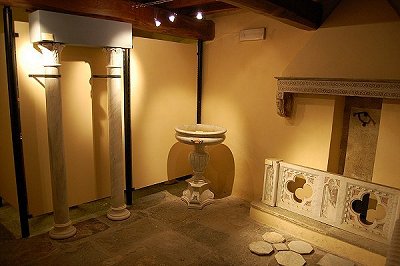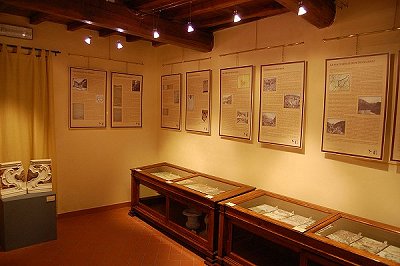| |
|
|
how is
the |
Museum of the "Bent
Stone" in Levigliani
permanent
exhibition of the apuan marble tradition
|
|
|
areas of the
museum
|
|


|
ground floor:
Pure and holy marbles
(in niveo templo)
The
area dedicated to sacred and funerary art exhibits important handiworks
which testify to marble natural suitability for religious-content work
of art. Columns, capitals, balustrades, vases, sculptures and
bas-reliefs with religious images are here exhibited. It is a productive
sector which in modern and contemporary age has been the leading sector
of artistic and artisanal working techniques which use Apuan white and
coloured marble.
Post council architecture choices for poor and local materials led into
a crisis the sector which for long had contributed to several studies on
sculpture, especially in Carrara, Pietrasanta, Seravezza and Querceta.
|

|
|
fax +039 0584 778053 |
first
floor:
The colours of marble (luxuriosa
materia)
The section
is dedicated to coloured Apuan marble which nowadays is rarely used by
the mining industry but was once particularly famous and prestigious.
It was especially appreciated for its polychromatic decorations and
baroque tarsias but it almost fell into disuse for furniture and luxury
products.
The windows exhibit a rich collection of ornamental coloured Apuan
marble of historical value and examples of handiworks exploiting the
evocative effects of stones polychromy.
|

|
|
fax +039 0584 778053 |
Stones for houses and workshops
(locus alchemicus)
For
centuries kitchens and chemist’s shops have used a common tool, especially
made of marble: mortar. Crushing of organic and inorganic materials was a
typical activity in both places. Marble and local stones were raw materials
for the production not only of mortars but also for vessels for the
conservation of oil and lard and for containers for fire. The Museum houses
a Park herbal about the flora of the Apuan Alps with exsiccata of
plants of high naturalistic value.
|
|
fax +039 0584 778053 |
second floor:
27 centuries of history
(marmor signum temporum)
Thanks to the
material testimony of some marble serial but symbolic pieces of art
almost three thousand years of history come alive in a single place.
Especially architectonic work and everyday life tools mark the
inexorable passing of centuries.
Among local handiworks of historical and archeological value there are:
a non pictographic funerary cippus with half-circle crowning from the
Etrurian period; a large fragment of trabeation of an imperial Villa
Rustica; basements, kingposts and capitals from late-medieval
poliforas.
Multimedia room
It is the documentary and illustrative
area of the Museum.
It preserves filmography about the Apuan Alps and it allows to consult,
also interactively, visual documents and hypertexts.
All these materials
are a useful tool in order to understand the natural environmental and
the history of the protected area.
|

|
|
fax +039 0584 778053 |
third floor:
Apuan Ligurian tombs in Levigliani
(…ferrum hastae, lapides sepulcri…)
A special archaeological area exhibits ceramic findings (cinerary urns,
cups, etc.) and other type of tomb equipment (fibula, armlets, rings
etc.) from some graves dating back to the III-II century B. C. just
before Roman conquest of the territory. Worth of mentioning is a javelin
tip. It is thought to be bended for ritual purposes and it has miniature
dimensions because it belonged to a child. Graves were kept in a lithic
box consisting of five-six schist slabs with loose stones for external
protection.
|

|
|
|
Exhibited materials derive from chance discoveries and scheduled excavations
in Levigliani necropolis which is the largest burial ground of the people of
the Apuan Ligurians in the geographic region which still keeps their name.
The archaeological finds are deposited here by the Superintendence for the
Archaeological Heritage of Tuscany. |
|
|
|
|
|
|
|